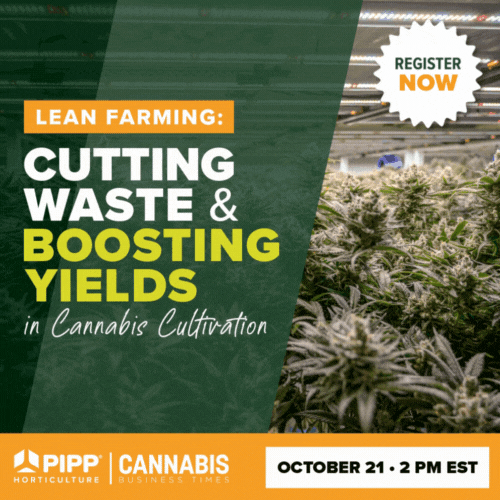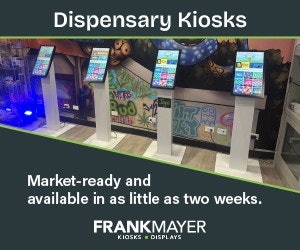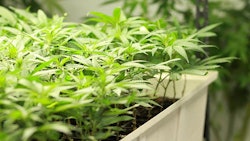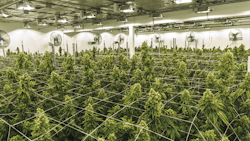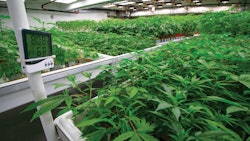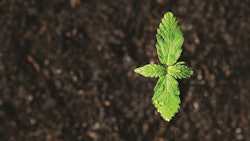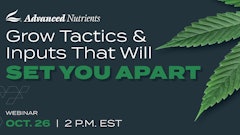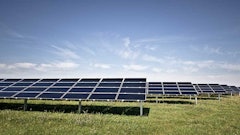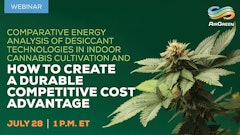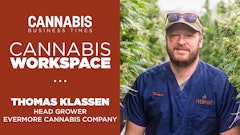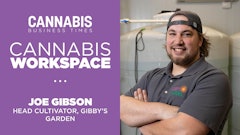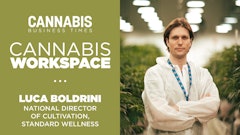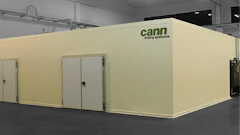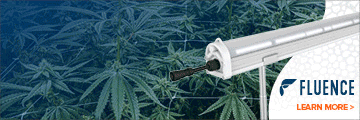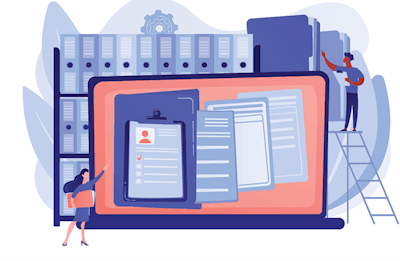
When building a grow, cultivators need to control “earth, air, wind and fire,” says Chris Wren, VP of operations at Planet 13. The company cultivates cannabis for the medical and adult-use markets within a 12,000-square-foot Las Vegas facility that includes about 2,700 square feet of indoor canopy operated under the name Medizin, in addition to growing in a separate, smaller facility in Beatty, Nev., that has two roughly 10-foot-by-10-foot grow rooms. According to Wren, optimal heating, cooling, dehumidification, fogging, lighting, circulation and ventilation are make-or-break conditions for a successful grow.
It’s all part of how the Nevada-based vertically integrated company provides product to its roughly 40,000-square-foot Las Vegas SuperStore, located in an entertainment complex that includes a café and bar. These attractions are co-located with Planet 13’s 15,000-square-foot customer-facing production facility.
What customers may not know about the company is that since it opened Medizin March 1, 2016, it has accumulated 71 gigabytes of environmental data. Every 15 seconds, Planet 13 tracks the environmental parameters of light, humidity, CO2, pH, air temperature, water temperature and electrical conductivity. In addition, it measures outputs from when the system measured the conditions—for example, if the dehumidifier was on.
“Basically, the whole purpose of a successful grow is being able to control, monitor and optimize those environmental conditions,” Wren says. “You've got your genetics, and you've got the environment, and that's really 90% of the job.”
Moving From ‘Feel’ to Integrated Technology
When John Dol entered commercial cannabis cultivation in 2015, he brought decades of high-tech commercial greenhouse growing and data analytics experience to the industry. Now owner of CannabiDol Consulting, Dol encourages cannabis growers to embrace available analytics technologies to optimize their grows.
Where everything—in traditional greenhouse ag and cannabis—once relied on the “feel” of the grower, a shift has occurred. “We've learned over time that the human body is the worst barometer for sensing what's actually going on with temperature and humidity. The plant experiences climate much differently than we do,” Dol says.
“Climate controls became a tool to tell us what was really going on with the crop. Every few years, there was another step forward in looking at the climate as a whole and not just individual pieces,” Dol says. Tools like integrated data analytics have been part of the industry’s forward movement.
In traditional, commercial greenhouse production, large-scale growers have relied on centralized environmental/climate control analytics systems that continue to improve, Dol says. He notes that many growers who haven’t been exposed to that technology have struggled with individual pieces of equipment all working on their own accord.
“With an integrated climate control system, you are controlling everything that's happening to the climate from one central brain, which then optimizes what happens in your crop,” he says. By having data from disparate systems integrated into one analytics interface, you can see how your systems are all working together as a whole.
Dol expects environmental data analytics technologies to increase. “It’s just starting to get more popular with [artificial intelligence],” he says. “It's a tool that's going to be able to tell the growers quicker what's going on and what needs to be rectified. I think long term it's going to just rectify it on its own. I think that’s going to be the next level of growing.”
Dol is quick to add that this doesn’t mean growers will be obsolete. Like car mechanics that moved from carburetors to fuel injection, growers will develop expertise in these new growing technologies.
Learning from the Analytics
Every stage of a plant’s life cycle requires different environmental conditions, Wren says.
“There are plenty of times that I add humidity to a space, and then five weeks later, I'm pulling humidity out of that space,” he says. “I have to be able to read those parameters and then subsequently control them, because just knowing the data doesn't do you any good if you can't react to it.”
Wren equates maximizing conditions for a plant to shooting a bow and arrow; you can’t adjust the arrow if it’s already missed the target. “You need to provide it the optimal environmental conditions to maximize photosynthesis and respiration in the times it needs it and then steer that crop into the developed expression that you want,” Wren says.
Wren admits that poring through environmental data and noticing trends has been a challenge, but imperatively, Planet 13 has that information in case it needs to adjust course.
More cultivators are starting to come around and utilize analytics, Dol says. “I think people are starting to understand that analytics is a tool—a helpful tool—and if you don't have that tool, you're going to get behind.”

